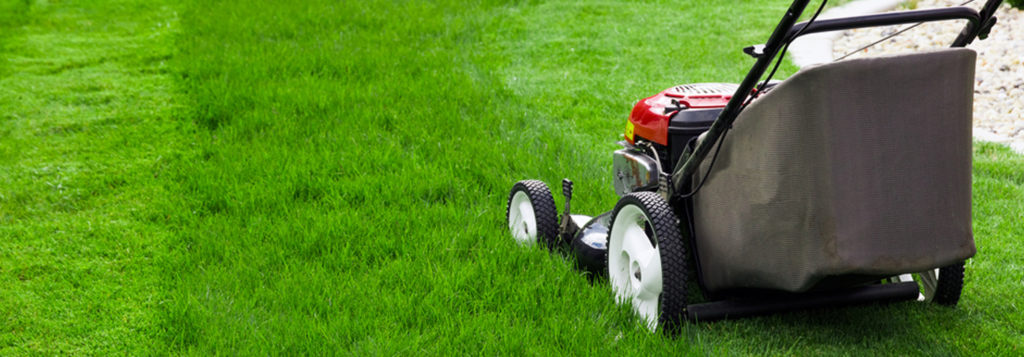Tackling spring lawn care provides a dose of fresh air, sunshine, and exercise—and sets lawns on their way to season-long glory. Spring lawn chores aren’t difficult, but they do play a vital role in getting grass on track for a healthy, productive growing season.
Here are our top spring lawn care tips:
Early Spring
Mower Tune Up. Change the oil, air filter, and spark plug. Clean the top and undercarriage, removing dirt and grass clippings. Just be sure to detach the spark plug wire before working around the cutting blade. Don’t flip a gas mower over to clean underneath; simply lift one side and brush away dried grass. If dried grass has hardened, loosen with a hand trowel or putty knife. Sharpen the mower blade, and replace it if it has large nicks or gouges. It’s a good idea to keep an extra blade on hand so you always cut with a sharp edge. Last but not least, fill the fuel tank.
Clean up. Walk over lawns and gather any twigs, branches or other debris that has appeared over winter. Dispose of trash, and add small twigs and leaves to compost piles. Then, rake out dead grass. It can also go on the compost pile, unless it contains weeds.
Repair bare spots in Northern lawns. Fix bare patches in cool-season turf using Scotts® EZ Seed®. Water newly seeded areas daily for at least a week, but ideally until grass reaches mow-able height. Avoid mowing until grass is at least 2 inches tall or the same height as surrounding lawn. (Wait until late spring for Southern lawns.)
Prevent weeds in the North. For Northern lawns where crabgrass has been a problem in the past, apply Scotts® Turf Builder® Halts Crabgrass Preventer with Lawn Food in early spring. Follow label directions, and only use this product if no spring seeding projects are planned.
Feed the grass. If crabgrass wasn’t a problem, apply Scotts® Turf Builder® Lawn Food to Northern lawns around the time of the first mowing. This will give nourishment to plant roots for strong growth. If weeds weren’t an issue last year on your Southern lawn, feed grass with Scotts® Turf Builder® Southern Lawn Food to help protect lawns against heat and drought. With all lawn fertilizers, follow label directions carefully for best results.
Mow high. Adjust the mower deck to cut grass at the highest possible setting for the lawn’s type of grass. Tall grass sinks deeper roots (which can seek out moisture) and crowds out weeds. Most turf types thrive with a 3- to 4-inch blade height, which usually corresponds to a mower’s highest setting. Choose a middle setting for Zoysia grass and Centipede grass, and the lowest setting for Bermuda grass and creeping bentgrass. The rule of thumb for mowing is to remove only one-third of the total grass blade length at a time.
Edge beds. In early spring, soft soil makes edging beds a cinch. Using a sharp garden spade or half-moon edger, cut a 2- to 3-inch deep, V-shaped trench along beds to keep grass out. Maintain this edge with a string trimmer throughout the growing season, recutting only as needed. If you’re refreshing existing trench edges in spring by digging out soil or mulch that has filled the trench, toss weed-free material onto planting beds as mulch or add it to a compost pile.
Apply mulch. Wait until soil has warmed to refresh mulch for the growing season. Shredded mulch provides a polished finish to planting beds, which you’ll get when you use any variety of Scotts mulch. Scotts mulches provide vibrant year-long color and help prevent weed growth by blocking access to the sun. Add a 2- to 3-inch layer around (but not on top of) your plants.
